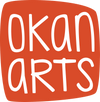By Patricia Belyea
SEATTLE WA Plymouth Piecemakers makes quilts for newborn babies and high school seniors at Plymouth Congregational Church. The group was founded by quilting guru Maurine Noble who taught many quilters how to free-motion quilt in the 1990s and 2000s.
As a member of Plymouth Piecemakers, my assignment this year was to make a quilt for Nora T—a bright young lady who was just graduating from Grade 12.
To get started, I contacted Nora's father and stepmother requesting a piece of memorable clothing to include in my project. On the first week of February, I received a blue plaid shirt that had been worn by Nora’s father many times. I was sure it would look great with Japanese textiles (my thing!).

Two months later, I still hadn't started on the quilt top. I was uninspired. My excuse was that the blue shirt looked dingy with my fabrics. The clock was ticking down on my deadline!
With the hope that a different piece of clothing could spark my creativity, I made a second call to the family. This call yeilded (from top left, clockwise); a light plaid shirt from Dad, a home-sewn yellow dress that Nora wore to her parents’ wedding, a maroon shirt from Dad, and floral-patterned skirt that Nora had outgrown. I paired each piece of clothing with three vintage Japanese yukata cottons.

After I cut apart the clothing, I sliced the clothing and yukata cottons into strips of random widths. These I sewed together into longer composite strips.

I created freezer paper patterns for the four letters in Nora's name and made 28"H letters using the composite fabric strips. The A with the dark red fabrics on a yellow background looked too contrasty for the composition. I wanted to make a new A block with lighter-colored fabrics but didn't want to disturb Nora's family with another clothing request. Hmmmm.

Then I noticed that the back of the maroon shirt fabric looked neutral and pale.

Working with a new trio of yukata cottons and the reversed maroon shirt fabric, I made a new A block with a beige background. I also switched out the mid-blue background of the N block for a pastel blue. The quilt top was then bordered with chunks of the background colors.

The quilt back was made with lengths of floral yukata cotton, seamed together to make a large piece of fabric. I secured the quilt top, Hobbs Heirloom Natural Cotton with Scrim batting, and the quilt back with pin basting. I machine stitched-in-the-ditch along the axis between the four big letter blocks and on the inside of the border, and tailor basted across the whole quilt.
Then I hand-stitched each letter block with a different design—a grid for the N, butterflies for the O, lily of the valley blossoms for the R, and arabesques for the A. I was mindful of the batting’s stitch requirement of no more than 8" apart when I planned my quilting.

A back facing finished the quilt so the edges have a clean, modern look.

I was out-of-town for the church service dedicating the senior quilts. Instead, during the summer, Nora came to Okan Arts shop after a morning lifeguard shift so I could personally give NORA Quilt to her.
Nora is off to Fordham University in New York City this fall—on a full academic scholarship. And so is NORA Quilt!










